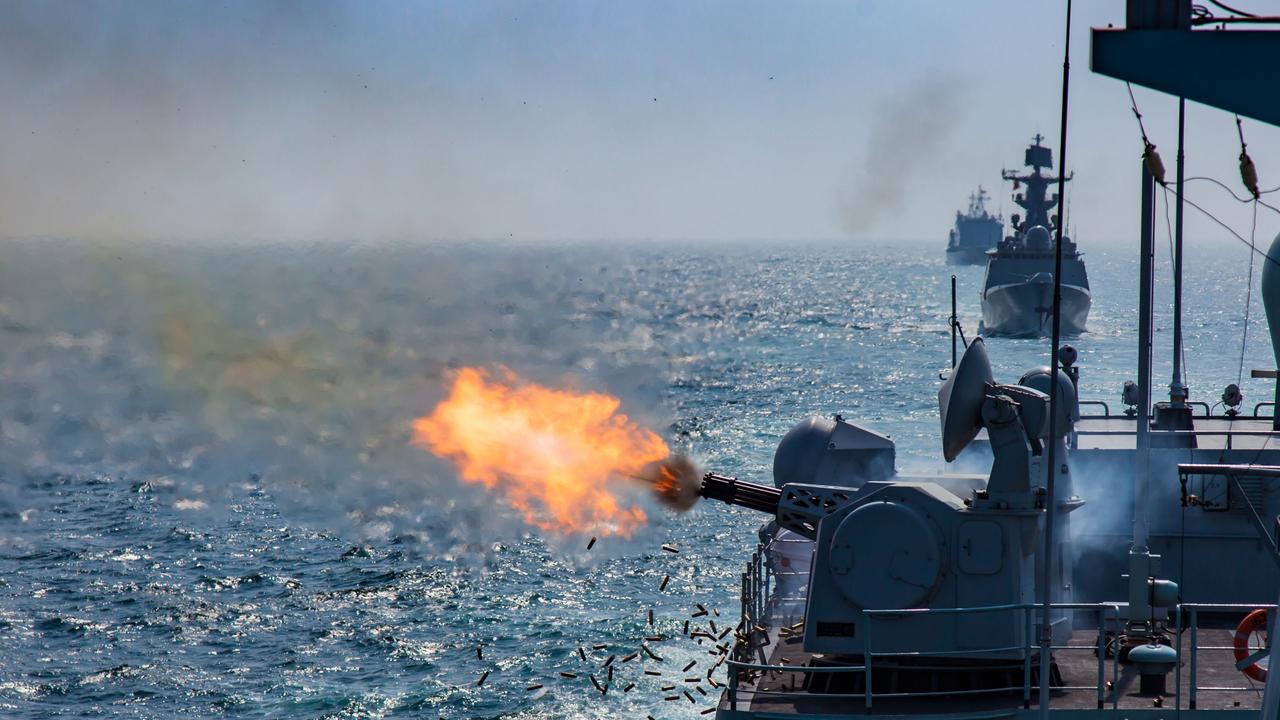Australia’s bungled submarine project leaves it exposed to China
As China builds a vast military, Australia has been left with an extreme vulnerability and “can no longer be complacent”.

Australia’s bungled submarine replacement process has left the country exposed. Some 87 per cent of our refined fuels pass through the South China Sea. So we’re strengthening ties with India and Japan to protect it.
Since 2015, Beijing has massively increased its naval forces.
It has militarised the South China Sea by building illegal island fortresses armed with fighter jets, advanced missiles and other military systems. Chinese coastguard ships have repeatedly been harassing Japanese vessels in disputed areas of the East China Sea. China’s army has clashed with India high in the Himalayas. And Canberra has been the target of Beijing’s coercive economic policies.
That’s caused all three nations to re-evaluate their defensive situation.
Especially when it comes to submarines.

While Canberra has been reluctant to accept the value of submarines, China has been forging ahead. It now has 15 nuclear-powered boats capable of ranging deep into the Indian and Pacific Oceans, with a steady stream of new ones rolling off the slipways. It also has a force of 50 – and growing – diesel-electric models.
These could quickly threaten to close the arterial flow of shipping entering and departing the South China Sea. And the nuclear submarines, in particular, could pose a risk to Indian and Australian home waters.
The best defence against a nuclear submarine is another nuclear submarine.
Only these can track another quietly enough, fast enough and long enough.
Warships are vulnerable and noisy, especially at high speeds. Aircraft need to have a good idea of where to look first. And diesel-electric submarines can’t run fast for long without having to recharge their batteries.
That leaves the ponderous leviathans that are the world’s supertankers vulnerable at any point between the Persian Gulf, Singapore, Tokyo and Sydney.
Out on a limb
An Australian Department of Defence-commissioned research team has reported on Australia’s extreme vulnerability to maritime blockade and conflict.
“With China’s increasing military capability and belligerence, there is no longer room to be complacent about Australia’s lack of energy security,” the group of RMIT, Curtin and University of Tasmania analysts state.
“Of particular concern is our reliance on liquid fuels imported via South China Sea shipping routes. This reliance has become more pronounced over the past few decades as all but two local refineries have closed. So even while we export crude oil, we import about 90 per cent of refined fuels.”
Australia’s petrol, diesel, jet fuel, marine fuel and kerosene are refined by South Korea, Singapore, Japan, Malaysia, Taiwan, Brunei and Vietnam.
“Even if the routes between these countries and Australia do not pass through the South China Sea, most of the crude oil these countries import to produce that refined fuel does,” the academics warn.
But even a miraculously quick purchase of 12 nuclear attack submarines won’t guarantee our energy supply, they say.
Australia would run out of liquid fuels within just two months.
That means road transport would grind to a halt, food deliveries will cease, and emergency services will be left inoperable. Even hospitals won’t have diesel for emergency generators.
“Until now, Australia’s strategic planning for conflict in the South China Sea has largely focused on military requirements,” they write.
“There are five main options to reduce our vulnerability: diversify import sources; increase local refining capability; reduce dependence on fossil fuels; increase strategic reserves; and educate and prepare the population for possible shortages.”
Balance of power
Australian Prime Minister Anthony Albanese and Japanese Prime Minister Fumio Kishida will meet in Perth this weekend. They’ve already met several times in recent months.
They’re working on a new “Joint Declaration on Security Cooperation” with a specific eye towards China’s growing military strength – and willingness to use it.
The prime ministers are also set to formalise co-operation in securing energy supplies: Australia is Japan’s biggest supplier of liquefied natural gas.
Japan and Australia have already strengthened military relations over the past five years. In 2015, former prime minister Shinzo Abe reinterpreted Japan’s constitution to allow its Self Defence Forces greater freedoms to co-operate.
But a formal pact is yet to be signed. Likewise, there’s been a significant uptick in Australian defence ties with India in recent months.
The joint naval activities reflect mutual interests in keeping the narrow passages between the Indian Ocean and South China Sea open to international trade.
Gateways such as the Malacca Strait, Sunda Strait and Luzon Strait are particularly vulnerable to submarine blockade.
A recent Congressional Research Service report expects China will have a modern force of 10 SSBN (ballistic missile carrying) submarines and 16 SSN (attack submarines) by 2040.
Meanwhile, the US fleet is expected to diminish.
It currently has 14 deterrent SSBNs and 50 SSNs dispersed around the globe.
But the US no longer has enough shipyards capable of building replacement vessels fast enough to sustain these numbers into the 2040s.
And that means Beijing could soon gain numerical superiority in the Indo-Pacific.
Like Canberra, Washington needs the co-operation of Tokyo and New Delhi to maintain its advantage. As a result, foreign ministers of the Quadrilateral Security Dialogue (India, Australia, Japan and the United States) recently met to reaffirm their commitment to oppose any unilateral actions seeking to change the status quo in the Indo-Pacific.
And the four navies will engage in comprehensive anti-submarine exercises off Japan between November 8 and 18.
Jamie Seidel is a freelance writer | @JamieSeidel




